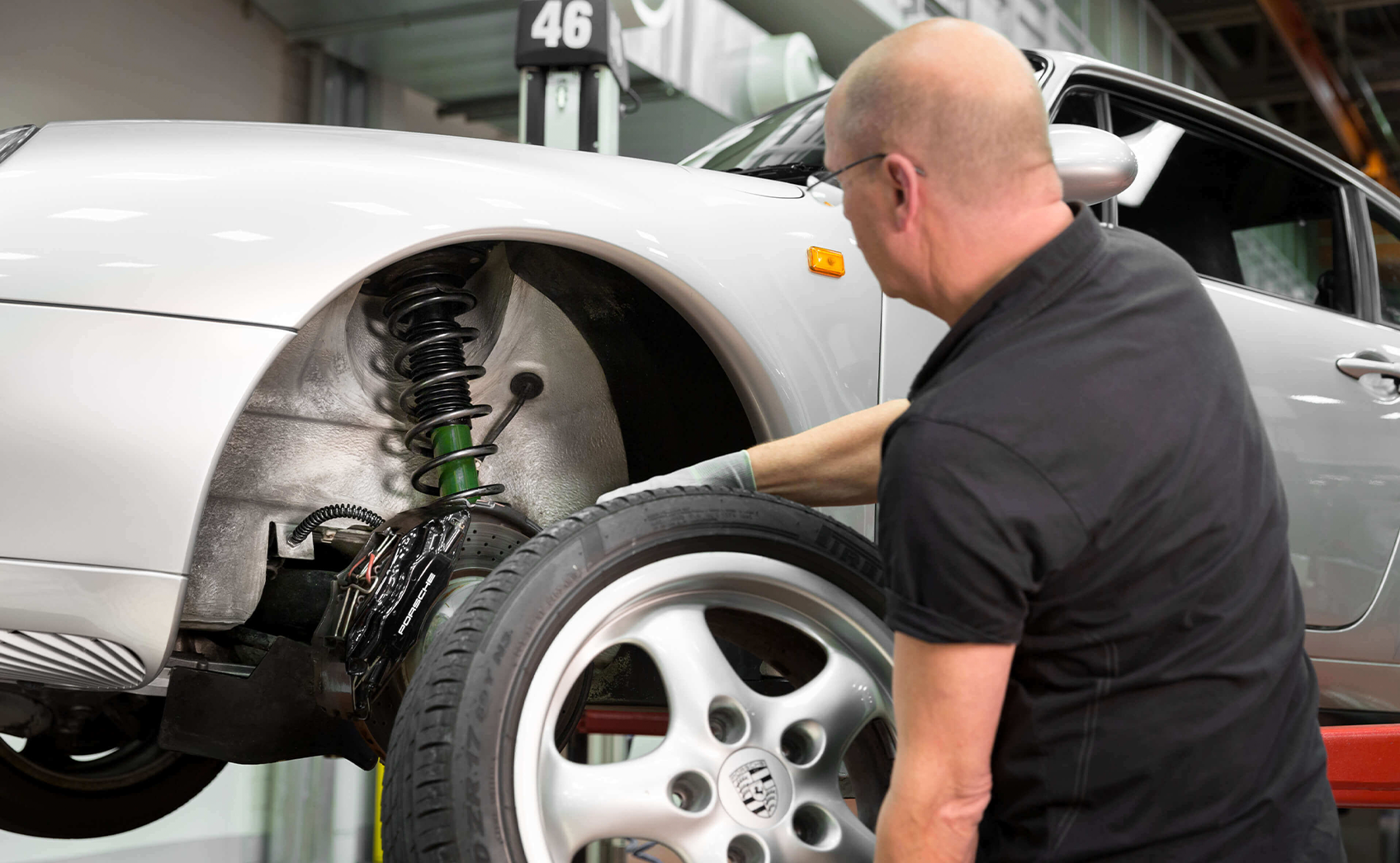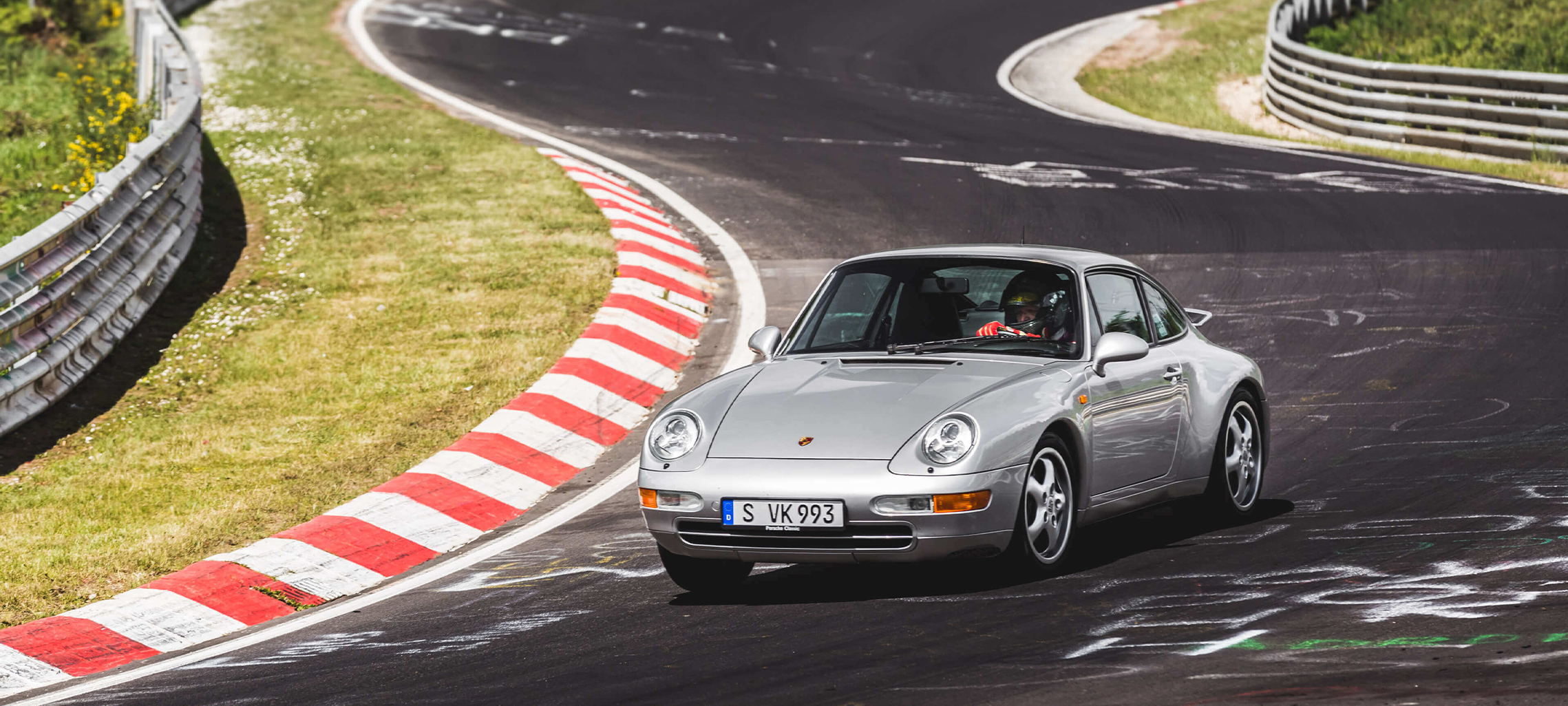- For whom the installation of a sports suspension is worthwhile
- A comparison of the 3 types of sports suspensions
- How expensive are sports suspensions?
- Installation: How to install a sports suspension in your car
- For which car makes and models are BILSTEIN sports suspensions available?
- Conclusion on sports suspension
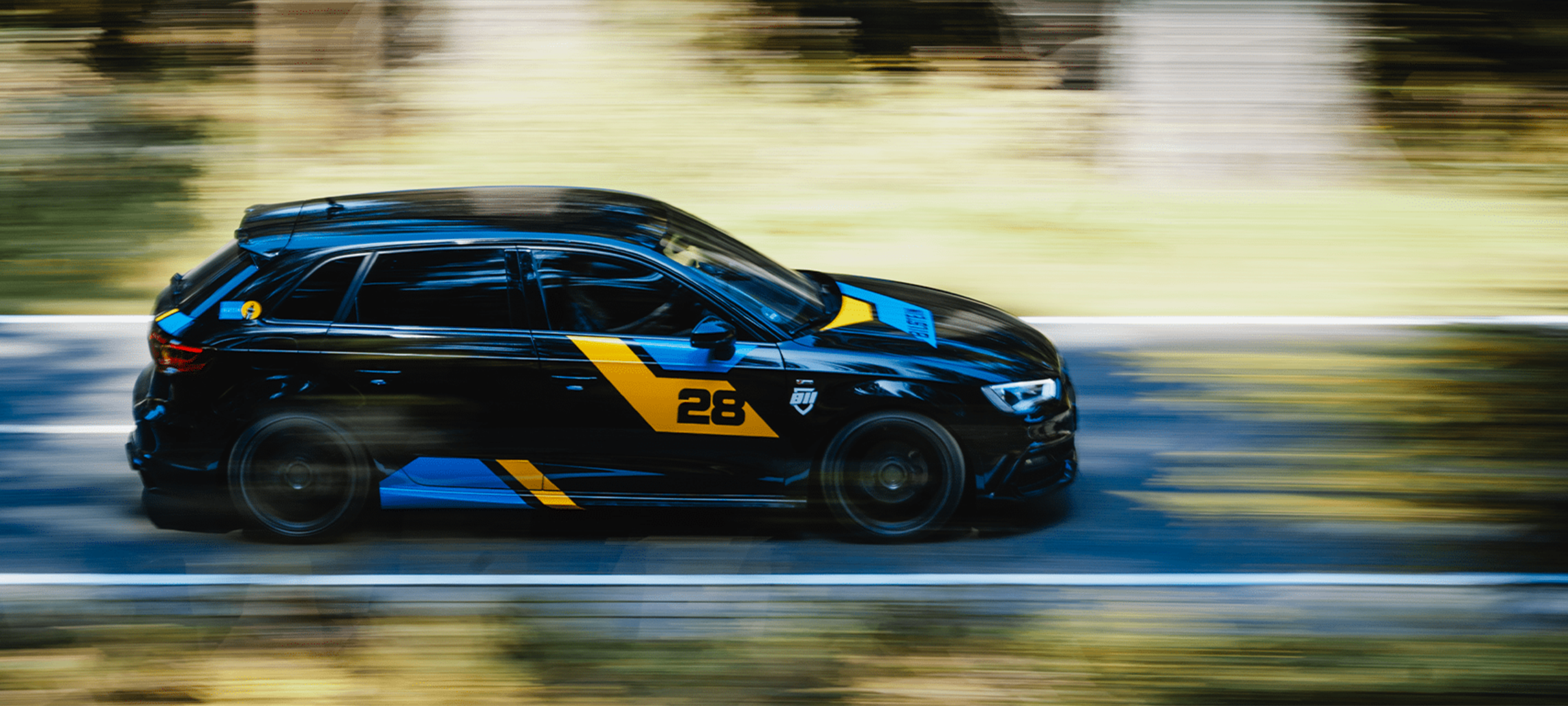

What is a sports suspension? The big overview and guide
Sport suspension refers to a suspension in which the combination of springs and shock absorbers is tuned more sportily than is usual for a standard suspension. This ensures better roadholding, especially in bends and when driving at high speed.
The most important points at a glance:
For whom the installation of a sports suspension is worthwhile
In general, sports suspensions are installed for two reasons: One wants to achieve a sportier driving performance and/or a lowering of the vehicle.
The standard suspensions of the various manufacturers are by no means bad or of inferior quality. On the contrary, many manufacturers have fitted BILSTEIN suspension systems and shock absorbers as standard.
But in order to meet the needs of the broad mass of motorists, ride comfort is the most important criterion for standard suspension systems. For most customers, a good and safe driving experience is more important than maximum lowering or the ability to take bends faster.
But how do you use your vehicle?
Do you not only use your car to go shopping and to work, but also want to be fast and sporty on the road at the weekend? Do you also use your private vehicle on race tracks like the Nürburgring or do you want to take full advantage of the beautiful serpentines of the Eifel? Is the appearance of your car important to you and do you even want to cut a good figure at tuning meetings?
If you answered yes to one or more of the above questions, the installation of a sports suspension makes perfect sense. However, if these advantages are not important to you, you will be more comfortable and probably cheaper with the standard equipment.
A comparison of the 3 types of sports suspensions
When it comes to sports suspensions, a basic distinction is made between the following suspension types: sports, coilover and air spring systems. But what are the differences?
Sport suspension without thread: The advantages and disadvantages
With normal sports suspensions, the combination of shock absorbers and springs is tuned to be more “sporty” than with standard suspensions.
Sports suspensions like the BILSTEIN B12 are made for dynamic drivers. Thanks to a moderate lowering, they offer secure roadholding, even when driving at speed over poor tarmac.
The ride comfort remains close to the standard suspension. This is also because the damping usually remains unchanged at a preset level – which ensures uncomplicated driving pleasure.
The disadvantage: In contrast to a coilover suspension, the preset damping is fixed and cannot be adjusted afterwards via a screw thread. This provides less flexibility and adjustment possibilities to the driver’s personal preferences. But it is definitely an upgrade over the standard suspension.
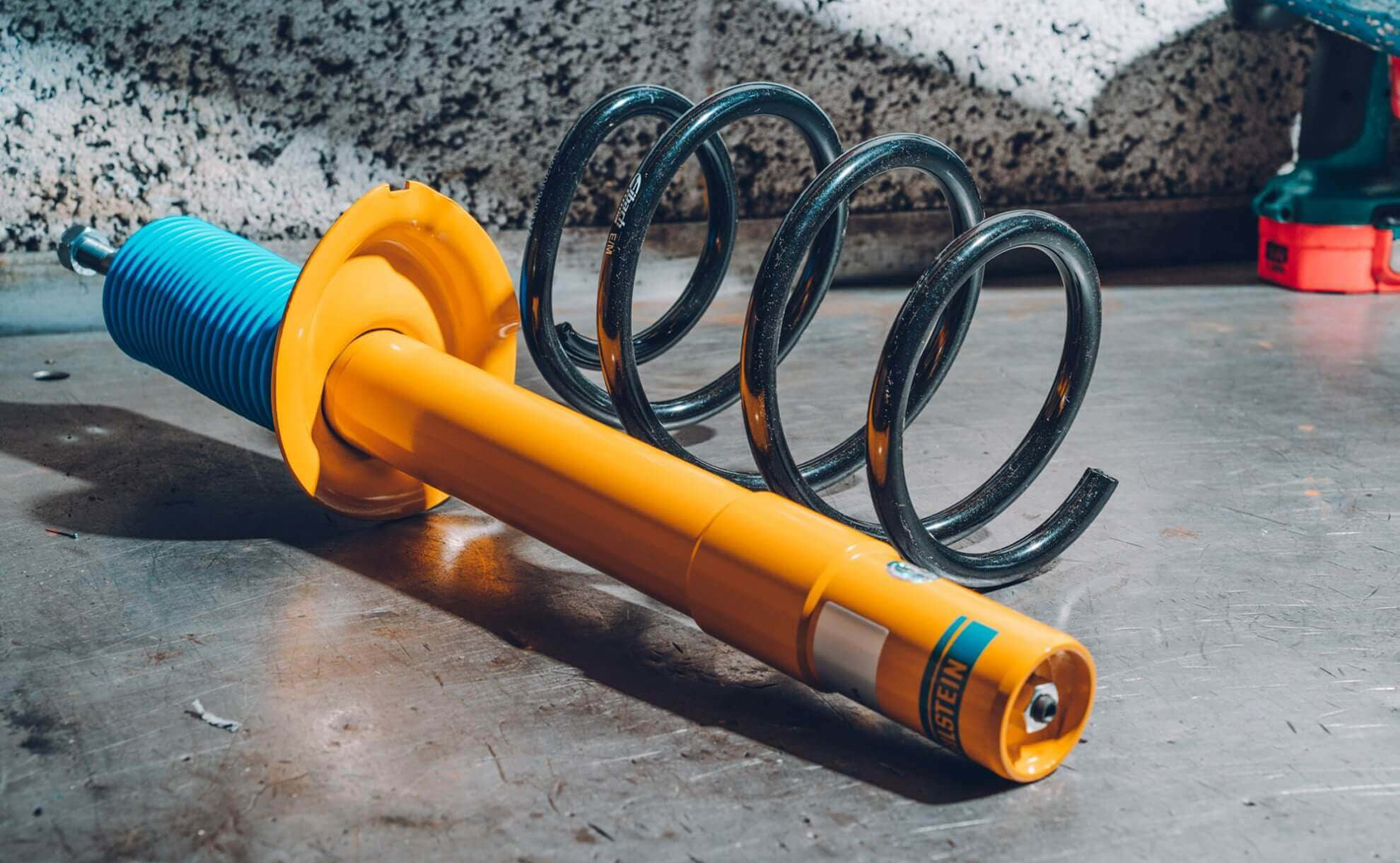
Performance coilover suspension
As the name suggests, a coilover suspension is a suspension with a screw thread. With this, the lowering can be adjusted individually. This is usually done by the driver or tuner and the thread is screwed to the desired height by hand. Tools or a workshop are not required for this.
By changing the hardness, as well as the rebound and compression damping, coilovers also allow flexible adaptation to the different conditions of the track and the vehicle.
You can find a detailed overview with all the advantages and disadvantages in our comprehensive coilover guide.
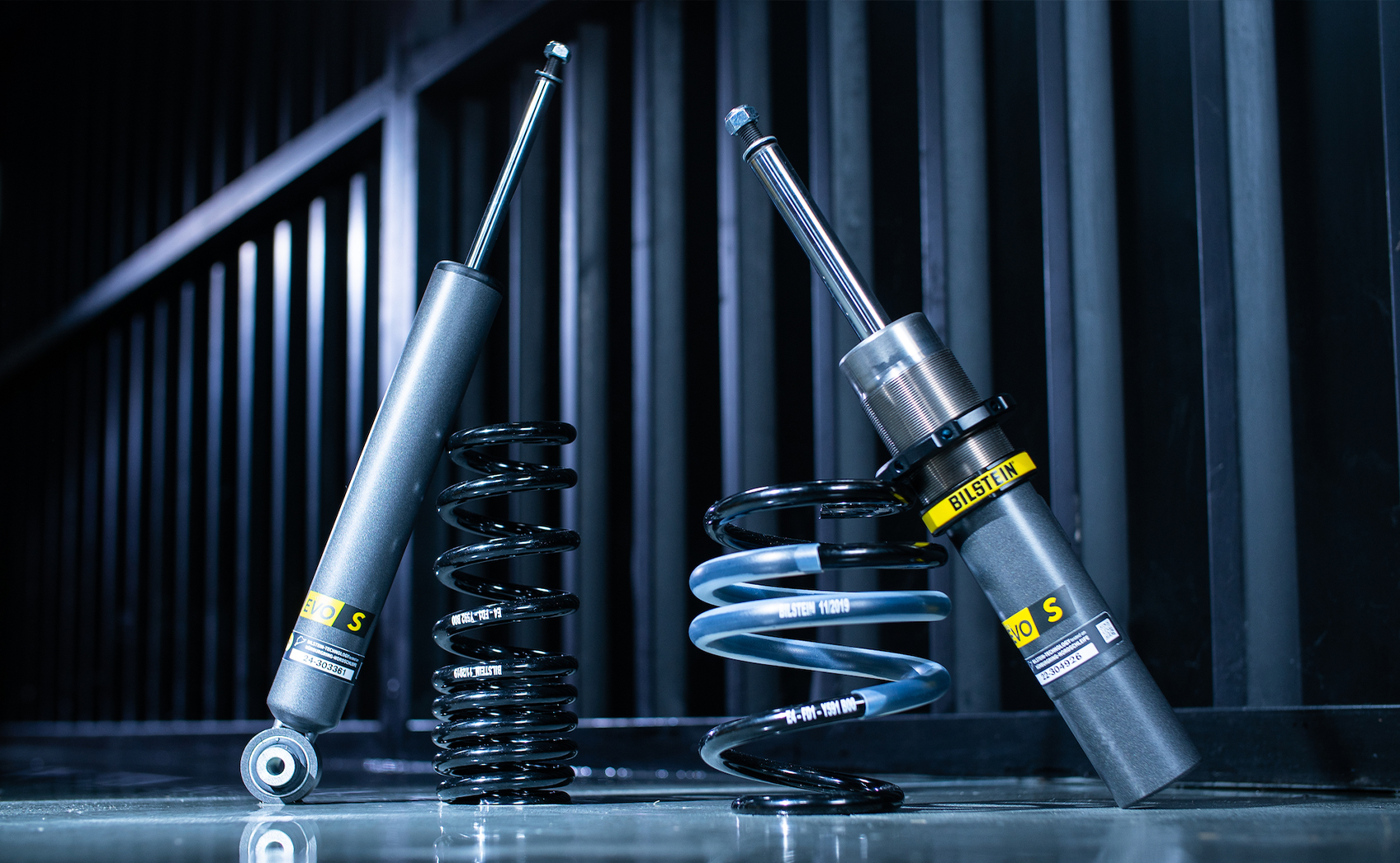
Air suspension
With air suspension, also called airride or air suspension, it is possible to continuously regulate the height of the car from inside the vehicle. The usual steel spring is replaced by an air bellows.
Due to their positive characteristics in terms of comfort and driving dynamics, air suspension systems have also been installed as standard in SUVs, saloons, convertibles and coupés in the luxury class for some years now.
In our article What is air suspension? The Airride air suspension module, we explain all the details of an air suspension and tell you what to look out for when installing it.
Retrofitting an air suspension is relatively expensive due to the many components and the associated complexity and is not realistic for most vehicles.
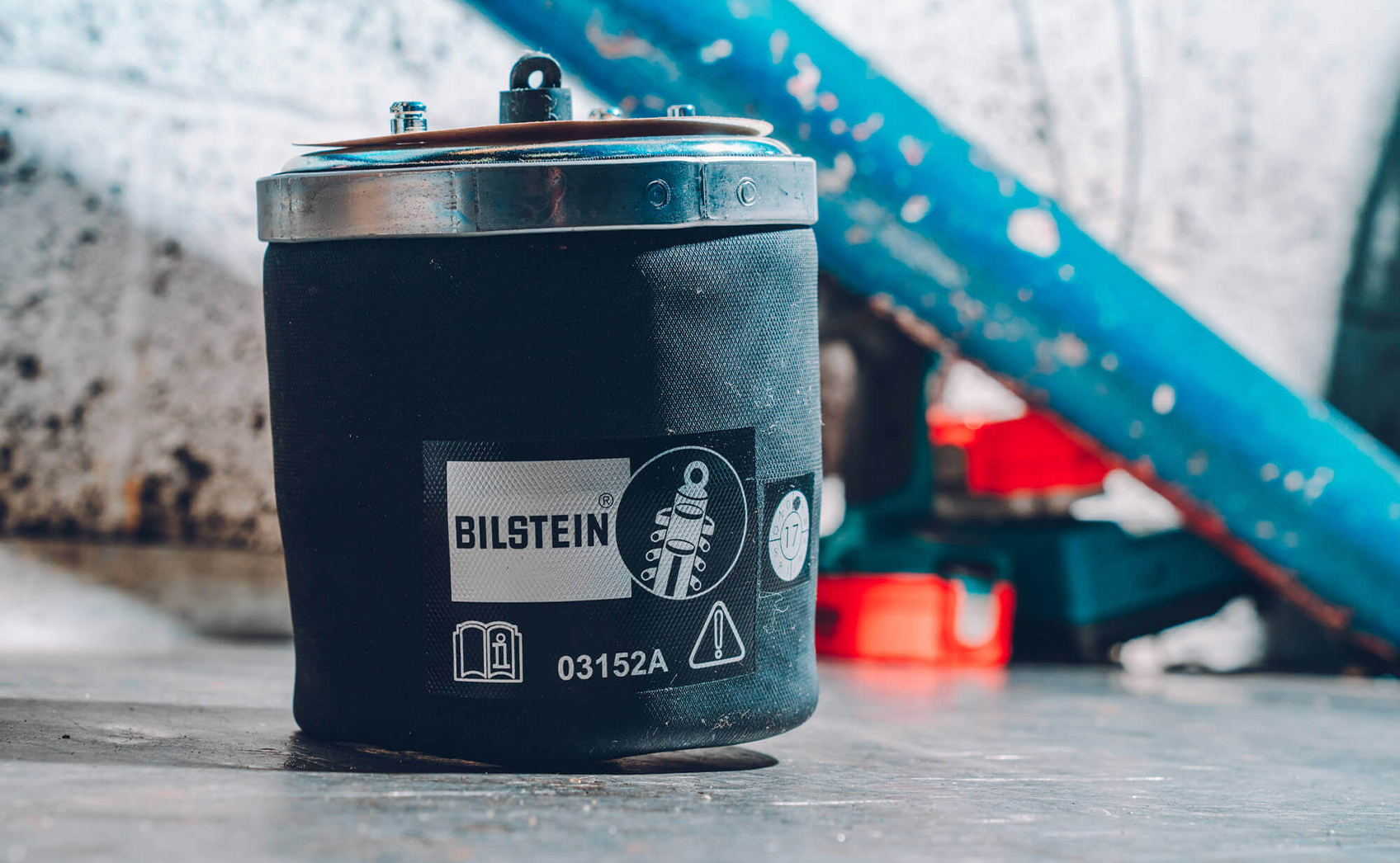
How expensive are sports suspensions? An overview of installation, registration and product costs
Since the prices of the various manufacturers vary greatly in some cases, it is not possible to make a clear statement about the exact costs. The costs can also vary from case to case due to installation by a specialist workshop or the respective vehicle model.
Nevertheless, we would like to try to show a rough classification and price range:
- Type of coilover suspension: Sports suspension kit with 4 shock absorbers for moderate lowering and dynamic, sporty handling (e.g. BILSTEIN B12).
Average cost: approx. € 500-900
- Type of coilover: Workshop installation costs, approx. 2.5 working hours.
Average costs: approx. € 150-250
- Type of coilover: Wheel alignment / wheel alignment
Average costs: approx. € 35-70
- Type of coilover: Registration costs
Average costs: approx. € 35-50
Please note: These are flat-rate costs that are realistic according to our experience. Depending on the individual case, vehicle and workshop, these prices may of course vary slightly.
With the BILSTEIN dealer and workshop search, you can find a suitable partner for the purchase and installation of your threaded ride height adjustable kit.
Installation: How to install a sports suspension in your car
A sports suspension should always be installed by a professional. Theoretically, it is possible to replace the suspension on your own (assuming you have the necessary know-how), but installation by a specialist workshop or an experienced automotive mechatronics technician is always the safest option.
In addition to a warranty on the installation, as well as correct wheel alignment and registration, you can then be sure to fulfil all requirements according to TÜV guidelines and ABE (general operating permit).
We cannot and do not want to give step-by-step instructions for the installation of a complete suspension system at this point. That would go beyond the scope of this article. However, we can recommend this detailed installation video that goes into more detail on the various aspects of suspension installation.
Changing the suspension | Installing sports suspension BMW AUDI VW | DIY Tutorial (DE)
What you should pay attention to when installing: TÜV, ABE and parts certificates
The most common form of approval for modifications to vehicles are parts certificates. In addition, there is also the general type approval (ABE) for parts that are particularly easy to fit. In contrast to ABE certificates, modifications that require a parts certificate still have to be approved by an expert.
Before buying a sports suspension, you should read the relevant parts report. You can usually find this on the websites or online shops of the various manufacturers.
The parts certificate always states the axle loads and drive concepts (all-wheel, front or rear-wheel drive) for which the certificate is valid. You will also find the maximum permitted lowering range.
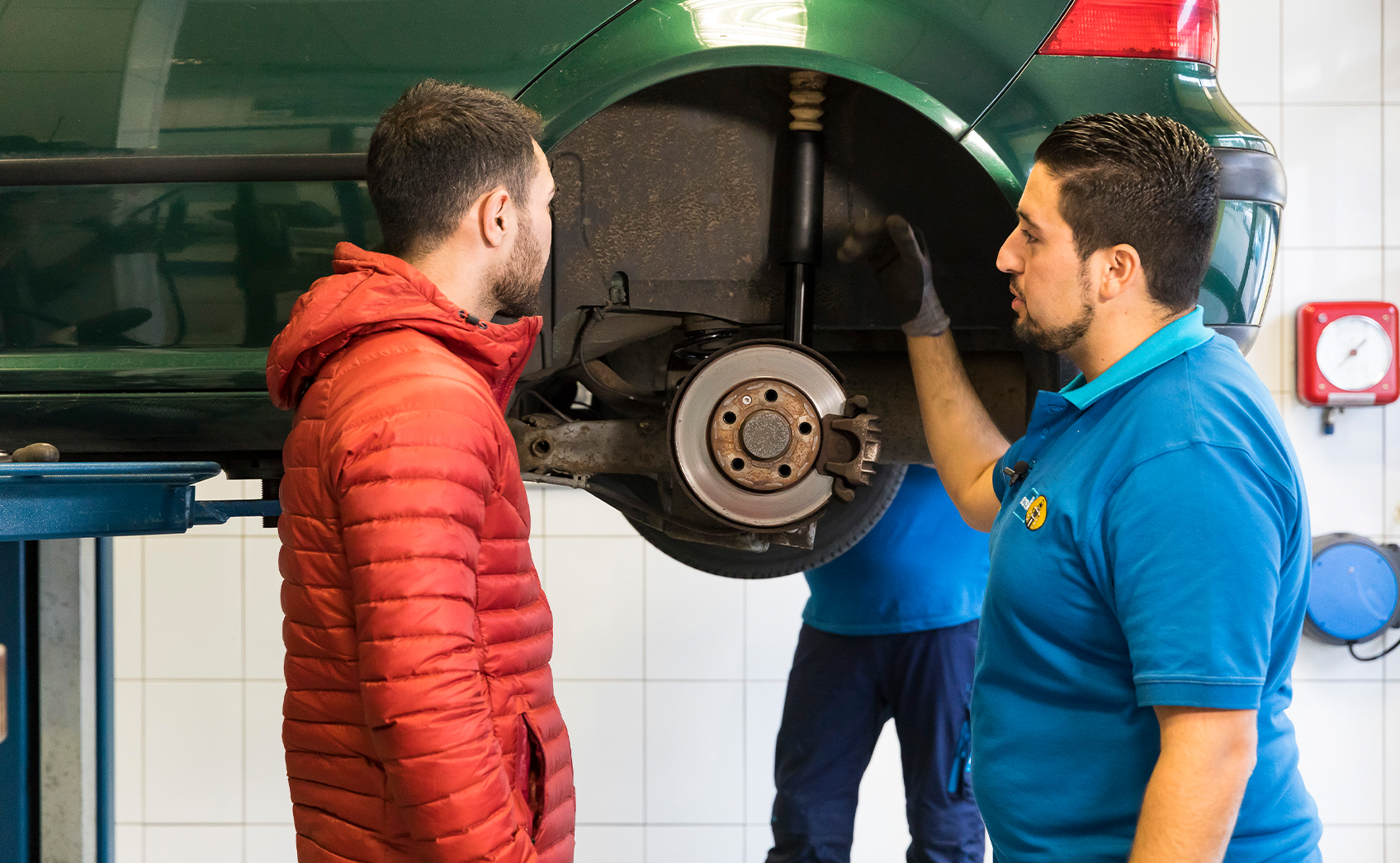
After the installation of a new suspension, the roadworthiness of the vehicle must still be checked by a TÜV or Dekra expert. The expert uses the conditions in the expert report as a basis. If you want to have modifications to your car approved, you must bring this document with you to the inspection.
Although a vehicle’s operating licence expires immediately after the modification, the car may still be taken to the TÜV or Dekra test centre. If the inspector does not find any defects, he issues a certificate according to §19.3 StVZO. With this certificate, the owner can have his modifications entered in the vehicle documents (document according to §19.4 StVZO) at the registration office.
A good overview of the registration regulations for the various tuning measures can be found on DEKRA Tuning.
Sports suspension installation by a BILSTEIN suspension expert
When you order a BILSTEIN sports suspension in our Online Shop, we also offer a special service for our private customers: If you have your suspension professionally installed by a BILSTEIN suspension expert, you will receive a 2-year extended warranty, a free suspension check and a discount on the installation costs.
For which car makes and models are BILSTEIN sports suspensions available?
As a long-standing original equipment manufacturer for almost all major vehicle manufacturers, we offer our sports suspensions for a wide range of vehicle models, including BMW, Audi, Mercedes, Porsche and VW.
To find out whether there is a BILSTEIN sports suspension for your vehicle, you can enter your exact vehicle model in our interactive product search.

Conclusion on sports suspension
A sports suspension is an important upgrade over a standard suspension and your best option if you want to lower your car or prefer a sportier ride.
Even if the standard suspension is defective and needs to be replaced, the installation of a sports suspension, such as the BILSTEIN B12, can make sense. At around €800 including installation and registration by a specialist workshop, the costs for such an upgrade are kept within reasonable limits.
Sports suspensions with screw threads (threaded suspensions) offer you more flexibility and adjustment options, but are more expensive to purchase. This option is aimed at performance-oriented drivers and tuning enthusiasts who are looking for maximum individuality and the best track times in addition to lowering.
We recommend always having the installation carried out by a specialist workshop. The suspension is a safety-relevant component of your car and only in this way can you be sure to comply with all the important criteria for the TÜV and the operating permit.
You might also be interested in
Our detailed overview of coilovers explains the differences between the various coilovers and shows for which type of driver which suspension is worthwhile.
And in our latest Auto Tuning Guide, you’ll find out everything you need to know about tuning this year.
